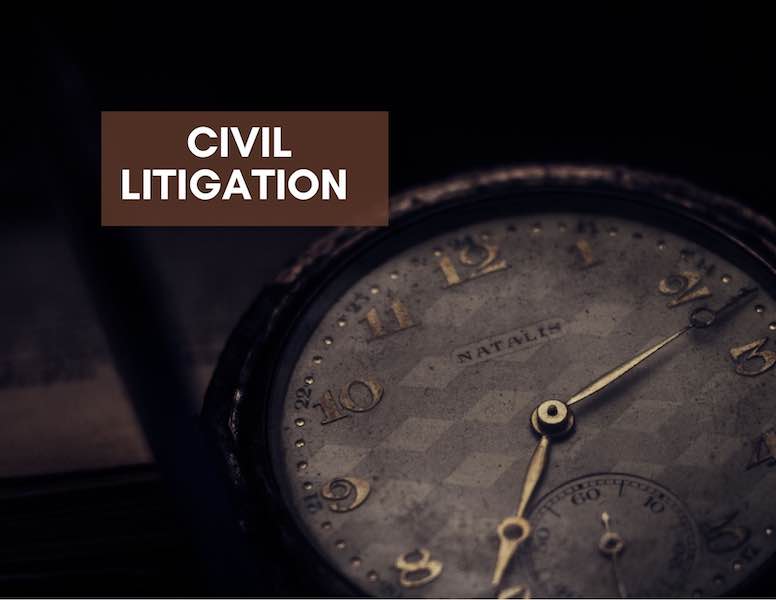When is My Last Day to Sue in A Midnight Hour Case?
by Preveena Ravindra Kumar ~ 5 July 2021
As an individual who intends to bring a civil suit against a prospective party, one should always be wary of the various limitation periods that apply. Failure of which, the prospective party (i.e. usually the Defendant) acquires a technical defence and will ordinarily apply to strike out the claim as an abuse of the court’s process.
The rationale for the imposition of a limitation time frame is unproblematic as it serves to protect Defendant from the injustice of having to face a stale claim, (that being a claim in which he or she never expected to deal with).
The recent United Kingdom Supreme Court Case of Matthew & Ors v Sedman & Ors [2021] UKSC 19 addressed a novel point on the law of limitation. The central issue before the Court was “when does the limitation period start to run for a cause of action which accrued at the midnight hour on 2nd June 2011?”
Does time start to run immediately after the midnight hour (ie, on 12.01 a.m. on 3rd June 2011)?
This article aims to shed some light on the novel considerations taken into account by the Supreme Court in unanimously holding that in midnight deadline cases, the cause of action accrues at the very start of the day, following midnight. In this regard, that particular day is considered a complete undivided day for the purposes of computing the limitation period.
When Does My Time Start to Run? : the General Position
In law, the computation of the limitation period usually starts from the earliest time at which an action can be brought. From a legal point of view, this is commonly known as the “accrual of cause of action”.
Usually, the position is such that the day of accrual of the cause of action should be excluded from the computation of time because the law rejects the inclusion of a fraction of a day.
This is to prevent part of a day from being counted in as a whole day which has the effect of causing prejudice to a Plaintiff who in turn loses the benefit of an entire day.
Example Scenario:
In January 2001, Aaron entered into a contract with Michael for the supply and delivery of pipes. On 16.02.2001 at 3.00 p.m, Michael delivered the pipes to Aaron however the said pipes were not of satisfactory quality.
In law, Aaron has 6 years from 17.02.2001 (ie the next day from which the pipes were delivered) to bring a claim against Michael for a breach of implied terms as to the unsatisfactory quality of goods supplied.
Note: the last day for Aaron to file his civil suit against Michael is on 16.02.2007.
Analysis: From the above example, it is clear that the law rejects the fraction of a day argument to prevent part of a day being counted in as a whole day. Specific to Aaron’s case, his defective pipes were only delivered on 16.02.2021 at 3.00 p.m. What this means is that half a day has already passed. As such, Aaron’s limitation period only starts to run the very next day (ie, on 17.02.2011 and runs for 6 years thereafter).
The case of Matthew & Ors (Appellants) v Sedman & Ors (Respondents); the Analysis
In the case of Matthew & Ors v Sedman & Ors the issue at hand was the filing of a claim couched on the tort of negligence and breach of contract on Monday, 5th June 2017. In law, the limitation period for both causes of action is six (6) years.
In this particular case, the cause of action accrued at, or on the expiry of the midnight hour at the end of Thursday, 2nd June 2011.
As such, if Friday, 3rd June 2011 is included for the purposes of calculating the limitation period, then the six (6) years limitation period expires at the end of the day of Friday, 2nd June 2017, which renders the claim issued on Monday, 5th June 2017 to be time barred. As such the High Court at the time held that the Defendants were entitled to rely on their limitation defence.
The matter was subsequently appealed to the Court of Appeal and Supreme Court in which the issue of “whether the date when the cause of action accrued (being 3rd June 2011) is or is not included for the purposes of calculating the limitation period” was considered?
As a whole, the issues collectively discussed by both the Court of Appeal and the Supreme Court can be summarised as follows:-
1. If a cause of action arose during the course of the day, one is to exclude that day for the purpose of calculating the limitation period. Reason being, by failing to do so, the Plaintiff in the suit would not have the full six (6) years period provided for in law.
2. Conversely, if the cause of action accrues at the very first moment of the day (ie, immediately after midnight), then the Plaintiff will have the full six (6) years and to exclude the same would have the effect of giving an extra day over the current available six (6) years. This in turn, distorts the six (6) years period intended by Parliament and would in turn also prejudice the Defendant by lengthening the limitation period by a complete day.
In a gist, the Supreme Court was of the view that 3rd June 2011 was a whole day so to be included in the computation of the limitation period. Applying the facts of the case, the last day (at law) to lodge the civil suit was then on 2nd June 2017. As such, when the suit was filed on 5th June 2017, it was considered out of time and the parties were time-barred from pursuing their claim.
Conclusion
Whilst the case of Matthew & Ors v Sedman & Ors seems highly technical on the face of it, upon close scrutiny, what comes to bear are unproblematic straightforward principles. If your case falls into the midnight hour category case, your time starts to run almost immediately after because it is considered a complete undivided day for the purposes of computing the limitation period.
Seeing that this Supreme Court judgement was only handed down in May of 2021, it will be interesting to see how the Malaysian courts and judiciary apply this principle (if any) to future midnight hour cases to come.

